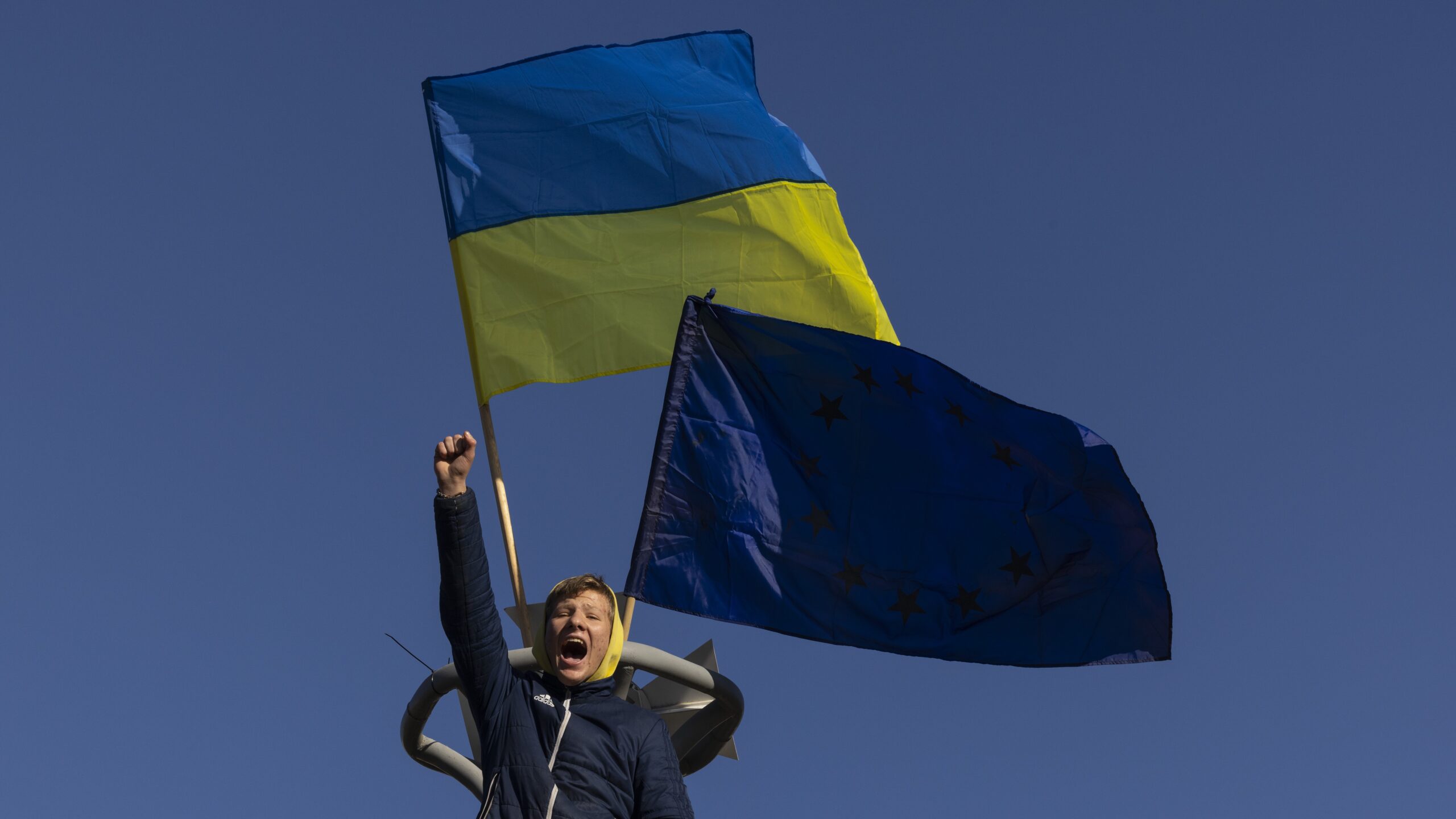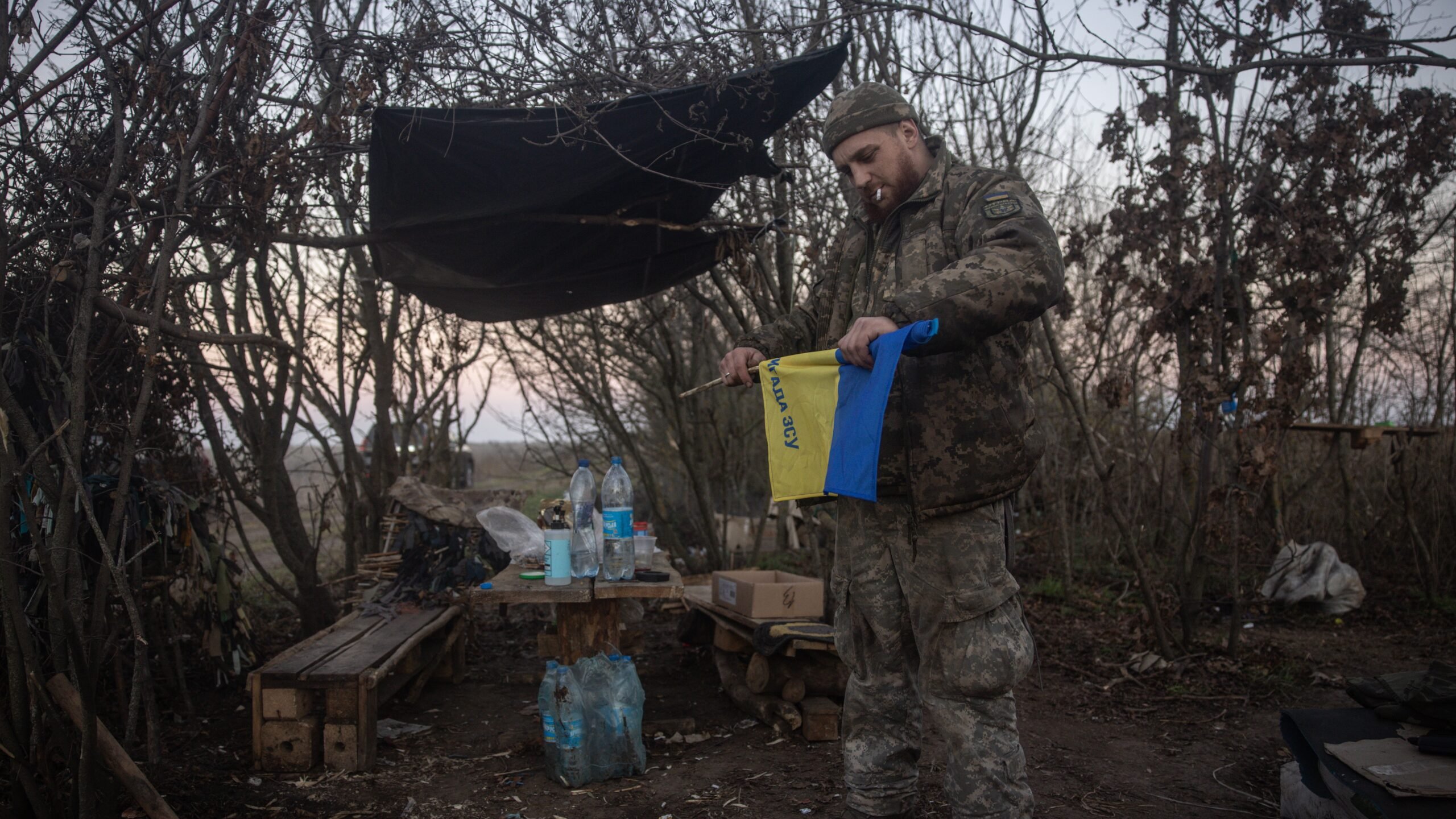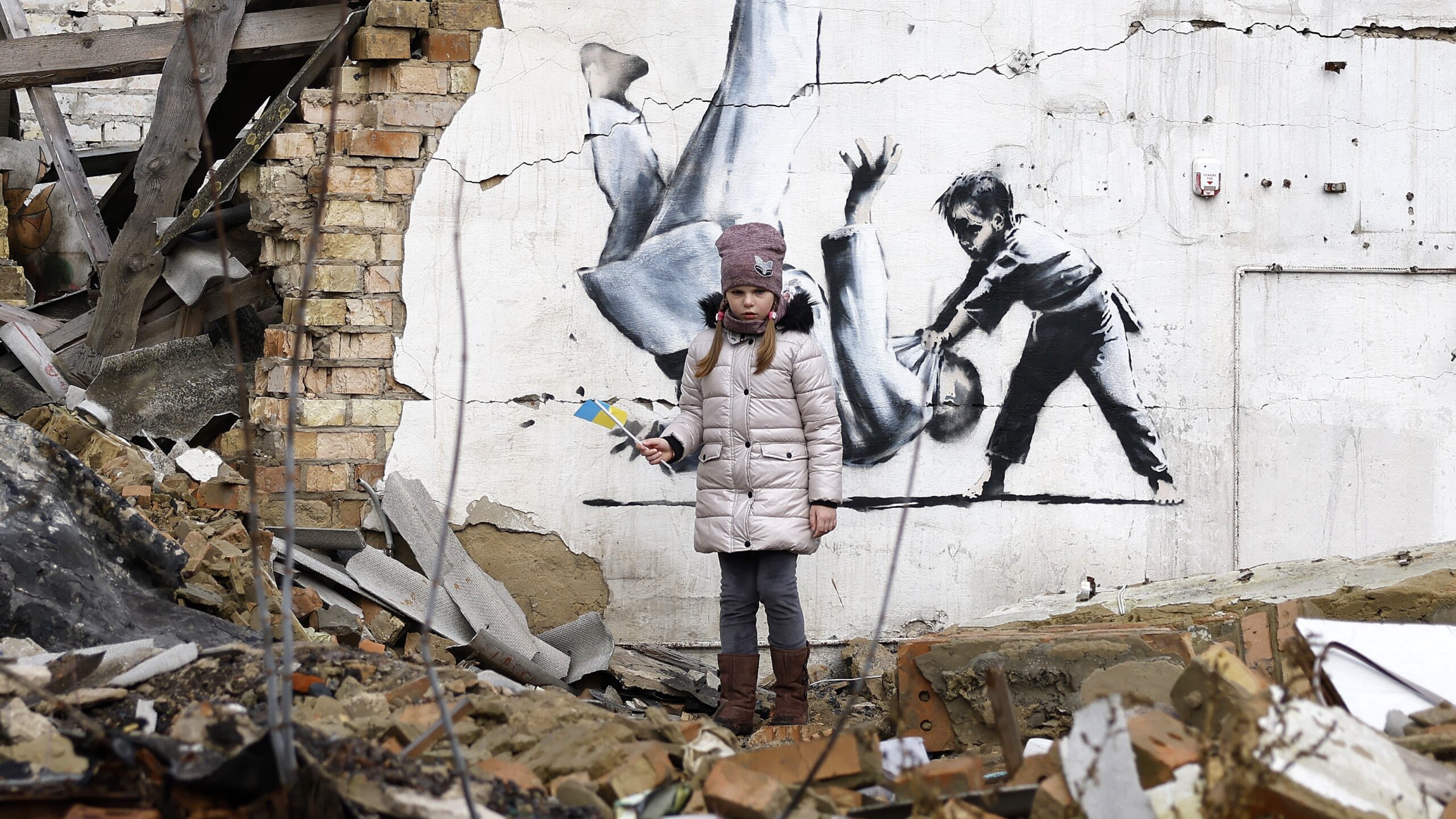REUBEN JOHNSON

WARSAW — “The Ukrainians are fighting for their and for our freedom,” said Polish Minister of National Defence Mariusz Błaszczak in the opening session of the annual Warsaw Security Forum (WSF) on Oct. 4. “We are committed to their [Ukraine’s] position being as strong as possible and to finish the conflict as soon as possible.”
Błaszczak’s position of steadfast and unqualified support for Ukraine was echoed throughout the event, the largest gathering of high-profile defense and foreign policy specialists to take place since the beginning of Russian leader Vladimir Putin’s so-called “Special Military Operation.” The consensus among European defense chiefs at the event was that Putin has no sincere interest in a brokered settlement; He will, they project, continue to try to prosecute hostilities until he understands that Russia has no prospects for prevailing in this conflict.
Which, attendees at Warsaw event seemed to agree, means the way forward is simple: continue to arm Ukraine until the local forces are able to throw the Russians out. In the weeks since the Forum ended, Russia has continued to suffer heavy losses, including the stunning public announcement by its defense leadership that it would be withdrawing from the Kherson region of Ukraine entirely.
Ben Hodges, the retired former head of US Army forces in Europe, has stated in multiple forums that Russia’s eventual defeat is all but a pre-ordained fact due to “their armed forces extremely poor logistics” and the Ukrainian military’s methodically-executed maneuver warfare.
“As long as we continue to provide them with what they need, to me this [path to Ukrainian victory] is irreversible,” he said during the WSF. “The Russians cannot stop it. The only thing that they’re able to do right now is murder innocent people.”
Based on conversations at the Forum and with sources, there seems to be widespread agreement on four aspects that Ukraine and its allies need to continue to focus on in order to push Russia further back — and prepare for what comes next.
Continuous Innovation And Modernization of the Ukraine Military
The Ukrainian military and the defense sector that supports it have also shown a previously-unanticipated talent for employing older-generation weaponry in ways other than that for which those weapons were designed. Highlights include the destruction of a large landing craft, a Russian Alligator-class LST, in the port of Berdyansk in March by what was reported as a combination of OTR-21 (SS-21) Scarab/Tochka-U ballistic missiles — a design nearly 50 years old — and ATGMs, and the downing of Russian Ka-52 helicopters using the Ukrainian-made DKB Luch Stugna-P ATGM.
The weapon systems used in an attack on the Russian air base in Neofedorivka on the Crimean peninsula near the city of Saki in August have never been revealed. The resulting explosions destroyed four Sukhoi Su-24 bombers, three Su-30SM multi-role fighters and damaged several other aircraft of both types.
But, according to an individual with direct knowledge of the engineering work on the weapon that was involved in the attack, who spoke to Breaking Defense on condition of anonymity, the strike was likewise carried out with “a legacy weapon system modified to be used in a role other than for which it was [originally] designed.”
“I do not expect any change in Ukrainian performance because they are fighting for their country,” said Gen. Rajmund Andrzejczak, chief of staff of the Polish armed forces. “I cannot imagine myself telling Ukrainians, ‘Change your position because it’s not sufficient for me.'”
The details remain unknown to this day. In September, the Ukrainian commander-in-chief, Valerii Zaluzhnyi, told the BBC that “a Ukrainian missile attack” had been responsible and not a team of saboteurs or suicide drones as originally suspected, but again did not specify which missile had been employed.
Ukraine’s own home-grown weapons designs have also been effective to a level beyond that of any pre-war expectations. The Neptune anti-ship missile (ASM), designed by DKB Luch and the seeker and guidance system developed by the defense electronics firm Radionix, was responsible for the April sinking the missile cruiser Moskva, the then-flagship of the Russian Black Sea Fleet. It also marked the first time that the naval vessel of a modern military power was sunk by an ASM designed and built entirely in Ukraine.
Ukraine’s ability to continue to be flexible with its materiel will almost surely be a driver of how Kyiv continues to fight back at Moscow. But it can’t be the only solution.

A member of the Ukrainian 63rd Separate Mechanised Brigade puts away the Ukrainian flag while packing up equipment in the midst of dismantling a frontline position that the brigade had occupied for more than five months at the border of Mykolaiv and Kehrson Oblasts as they move to a new forward position in Kherson Oblast on November 15, 2022 in Mykolaiv, Ukraine. (Chris McGrath/Getty Images)
Funding Unanswered Requirements
Despite very generous, massive amounts of military aid being sent to Ukraine by the US and other nations, there are still those who argue that the Ukrainian military is still fighting with resources that are inadequate to achieve victory.
This has given birth to the accusation that the Biden Administration “does not want Ukraine to lose but will not publicly commit to being four-square in support of a Ukrainian decisive victory. Those two objectives are not the same,” said one Eastern European defense analyst at the Warsaw event
“We’re paying another country to fight a horrible war on its own soil so that we won’t have to fight a worse one on the soil of a NATO ally,” Frederick Kagan of the American Enterprise Institute told the Washington Post on the subject in September. “It’s rather cold-blooded put that way, don’t you think?”
There are some clear holes that could be addressed, with rapid results on the battlefield.
It is true that the US and its allies have provided critically important weaponry, like the US-made HIMARS rocket artillery, to the Ukrainians. But HIMARs batteries have been provided without the longest-range ATACMS rounds being included in the missile mix. This is reportedly because the Biden White House — carrying on with a position of the Obama Administration in 2014 — does not want the Ukrainians “to be able to hit targets inside of Russia.”
The US have also provided the Javelin ATGMs and the British the Saab Sweden-UK NLAW ATGM. But without Boeing Apache attack helicopters — or some equivalent provided by another nation — armed with Hellfire missiles, Ukraine lacks the critical combination of modern infantry maneuver warfare plus close air support.
There are also no medium-range air defense systems in the class of the Patriot PAC-3 being provided for the protection of Kyiv and other major cities. Both Ukrainian air defense officers and the industrial enterprises that support them have told Breaking Defense on multiple occasions that munition supplies are becoming an issue for air defense weapons. Said one source, “we are running out of our own [Russian design] missiles to be able to shoot down the cruise missiles being launched at us constantly. Having systems like NASAMS sent to us are wonderful, but they are short-range and the supply of those missiles is also not endless.”
The most advanced medium-range air defense systems in the Ukrainian military are older, Soviet-era variants of the Almaz-Antei S-300: the S-300PT, S-300PS, S-300PMU and S-300V1. A number of these systems had been overhauled prior to the 2014 invasion and occupation of Crimea by Russia but are still at least a generation removed from the latest versions of the system operated by Moscow’s military.
These batteries are supplemented by around 60 of the 9A310M1 (SA-11) Buk air defense system, but those units are also running out of the Russian-made missiles that were in inventory before the invasion. A proposal was made by the Ukrainian side several weeks ago to modernize these Buk units by integrating the US-made Raytheon RIM-7 Sea Sparrow onto the platform, but Ukraine industry representatives state meetings with the US on this topic have yet to materialize.
A recent high-profile incident underscored the need for advanced air defenses for Ukraine. On Nov. 15 the Polish government and NATO forces were put on alert when two missiles landed in Eastern Poland in the village of Prszewodów, Lublin region. Originally thought to have been Russian ALCMs that misfired and hit Poland, it was later determined that the two explosions were created by older-model Ukrainian S-300s fired to intercept some of the almost 100 missiles that were launched by Russian forces that day.
“This incident almost put us all on the brink of war,” said the one of the Ukraine defense enterprise representatives, “with people immediately calling this an Article 5 violation. There is a danger to more than just people in Ukraine’s cities if we do not have adequate means to cover our skies.”
The Airpower Dimension
During his presentation in Warsaw, former NATO and SACEUR Commander, USAF Gen. Philip M. Breedlove, said that the success of the Ukrainian air defense forces against the Russian VKS and this missile attacks has been incredible. But, he noted, Ukraine’s defenses have been aided by the fact that Moscow’s air power capacities have almost completely atrophied.
Before the invasion, he explained, “we assumed Russia still had the skill set to perform the SEAD [Suppression of Enemy Air Defence] mission and could locate, track and neutralize these surface-to-air installations. This is a skill that air forces, particularly the USAF, practice every day. If the Russians ever had this capability, they evidently have forgotten about how to do this.”
Being unable to suppress the Ukrainians SAM units puts “the Russians now in an environment they are not used to and capable of operating under. Flying low is something [the USAF] practiced in the Cold War era — thinking that the US would have to fly low to avoid Russian SAMs. It is hard enough to conduct this in training in peacetime, but to try and switch and do this in wartime — as the Russians are now forced to — is almost impossible.”
Additionally, “the Russian air force pilots’ flying time [per month] is very low. This puts them in a position where they are unable to carry out missions that most western air forces consider to be critically important, Breedlove said.
In a perfect world, Ukraine could take advantage of these deficiencies, but its own air force lacks enough modern aircraft and weapons to do so. Military officials in Warsaw privately tell Breaking Defense that if they had to commit the Mikoyan MiG-29s still left in the Polish Air Force to combat today, they would be unable to do so. This because “we have shipped every single missile and other weapons that can be used by the MiGs to Ukraine in order to backfill the munitions they have already expended.”
Some of Ukraine’s near-miraculous success against Russian airpower include shooting down an inordinate number of the most advanced aircraft in Moscow’s arsenal.
The Sukhoi Su-35 Super Flanker has been described as the modern workhorse of the VKS but has been lost in significant numbers. The aircraft was considered such a generational improvement over the Su-27 and Su-30 models that proceeded it that it was relentlessly sought after by the Chinese PLAAF for years before Moscow finally signed an export contract.
Despite its performance and being equipped with the latest Russian electronic warfare/self-protection suite, two squadrons (24 aircraft) of Su-35s have been lost in Ukraine, according to the Ukraine Air Force (PSU) commander. The VKS have also lost 11 of another advanced derivative of the Su-27 family, the Su-34 fighter-bomber, with those losses accounting for ten percent of the total fleet ever manufactured. The Su-34 is also rated as the most expensive tactical aircraft in Russia’s inventory.

A girl stands next to graffiti of a child throwing a man on the floor in judo clothing on a destroyed building on November 14, 2022 in Borodyanka, Ukraine. (Jeff J Mitchell/Getty Images)
At the WSF, Breedlove assessed if the Ukraine had received modern US aircraft and the requisite training, or if NATO had been engaged in the conflict, Ukraine’s forces have wreaked havoc on the Russian ground forces. Specifically, this was the dramatic “lost opportunity” in the initial period after the invasion “when the Russian army was essentially stuck in the mud on the road to Kyiv.”
“If a western air force could have come in and attacked those columns it would have eliminated 40 percent of the army that Ukraine is still fighting now,” he explained. “Think of the destruction of an enemy force on the level of the ‘highway of death’ in the [1991 Desert Storm] war with Iraq.”
The US and its NATO partners have long known that in any conflict with Russia they would inevitably be outnumbered, explained one western defense analyst at the WSF. Therefore, western weapon systems were designed to be used in combination with one another — and in a manner that would create synergisms on the battlefield to compensate for this numerical inferiority.
Despite the impressive performance of the hardware supplied to Ukraine thus far, the lack of attack helicopters, ATACMS, advanced tactical aircraft, and modern air defense batteries, gives Ukraine in the end what has been characterized as a “cherry-picked” arsenal, said the same analyst. Therefore, the Ukraine military cannot achieve the desired, force-multiplying effects.
The Political Conflict To Come
Supplying Ukraine with more modern hardware is a critical mission for NATO at this point, agreed more than one of the speakers at the Warsaw event, but there is larger issue that needs to be resolved. That being “how quickly NATO can react,” said Estonian Minister of Defence Hanno Pevkur.
When the NATO council meets, “there are 32 nations around the table and the people at that table all have to worry about elections. At the same time, Putin does not have to worry about elections,” Pevkur said. So, NATO needs to work seriously on “how quickly can we make decisions and how quickly we can more forces when there is a need for that.”
It is that requirement to make decisions “at speed” which may become more pronounced sooner than most of the alliance members think, said Hodges in another WSF panel discussion.
In addition to assisting Ukraine, the alliance has to think about “how to prepare all of NATO’s frontline states. There are some terrible lethal battles ahead and we will have to continue to prepare for that, he continued”
Hodges is one of several military and foreign affairs specialists that predict one of consequences of an eventual defeat of Moscow’s forces will be a break-up of the Russian Federation into numerous new, smaller political entities. Signs of that disintegration are already appearing in parts of the 21 territories composed of ethnic minority groups (often referred to as “autonomous republics”) inside of Moscow’s empire.
Representatives from the recently-formed Bashkortostan independence movement have appealed to the Rada, Ukraine’s parliament, and have requested that the government of President Volodymyr Zelensky recognize their republic as “occupied territory.” In a parallel development, the Rada has also now begun the process of a request to recognize the independence of the ethnic enclave of Tatarstan.
Similar independence movements are also forming in Dagestan and Buryatia. These schisms and the rising instability in other regions are at least partly the result of the disproportionate number of personnel being sent into Ukraine having been conscripted from these ethnic minority republics. The head of one of these pro-independence groups told Newsweek that this is an example of “the colonial policy of the Kremlin — for Putin, it’s kind of reasonable to send one ethnic minority group to conquer another ethnic minority group.”
Ultimately, the future of the conflict may be decided by how the NATO nations address the gaps above. Helping to steel the resolve may come down, in part, to the growing list of war crimes being discovered as Ukrainian forces re-take areas of the country occupied after the initial invasion. The renowned Russian scholar and historian, Stephen Kotkin, has described the cause-and-effect relationship that this has on the decisions of western leaders:
“Every time Russia escalates its attacks it creates a higher level of Ukraine morale.” This creates a dynamic in which “Ukrainian valour and ingenuity plus Russian atrocities then equals greater western unity and resolve.” As with almost all of the actions taken by Putin both before and since the war began, the results are the exact opposite of what he had bet on.
“Ukraine will push the Russians back to the 23 February line by as soon as the end of this year and out of Crimea by next year,” Hodges concluded. “This will be the front end of the process leading to the collapse of the Russian Federation as we know it. Therefore, we in the alliance — all of us — have to be prepared for a very violent situation on the other side of NATO’s border.”
No comments:
Post a Comment